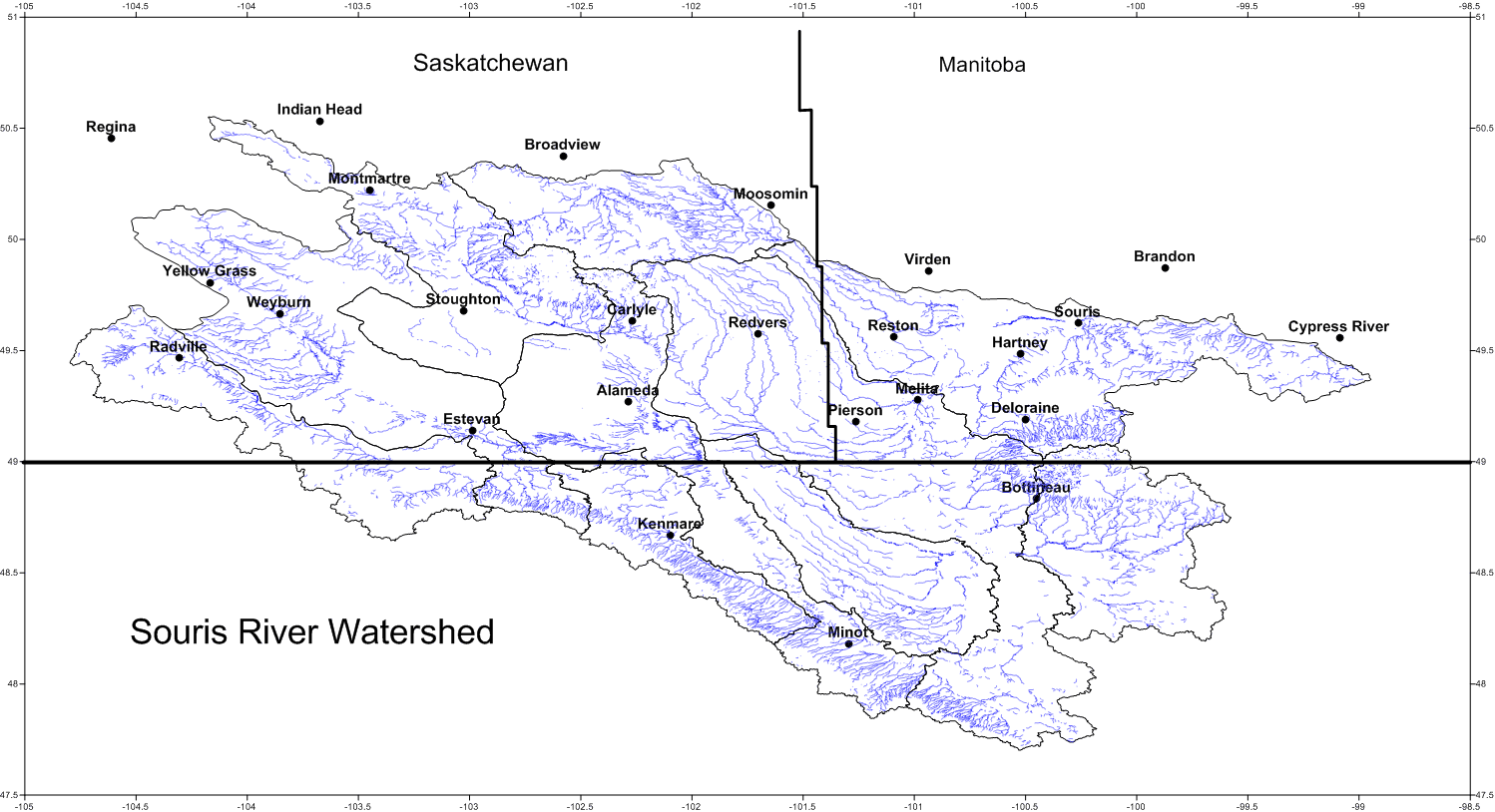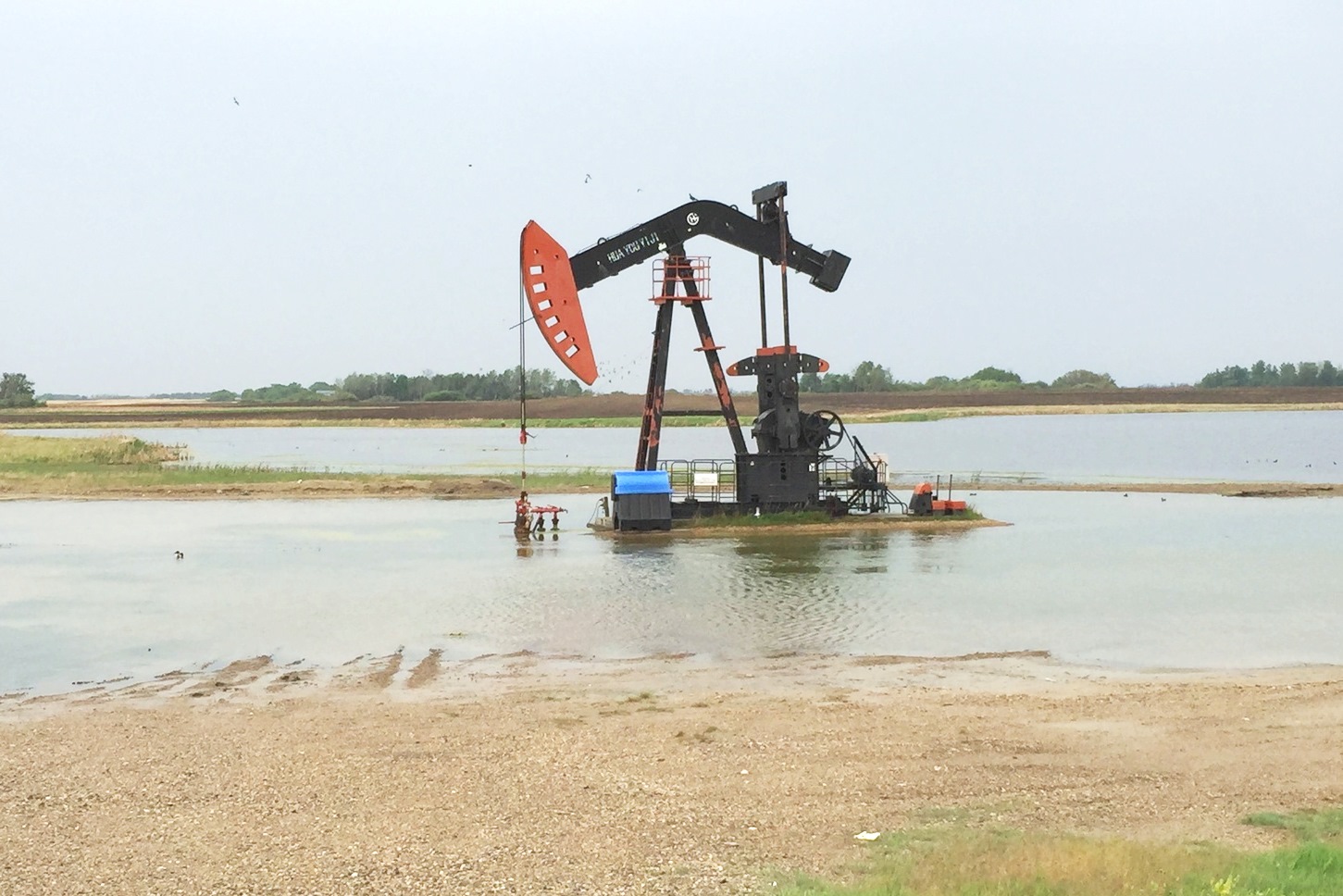The Canadian Prairies has one of the most notoriously variable climates in the world. It’s also a region rich in resources, and is consequently a hotbed for important economic sectors such as oil and gas, as well as electric power. Extreme climate events in the last century have changed the way these two sectors operate on the Prairies.
In a recent case study I participated in, we looked at possible future adaptation actions the energy sector can implement, both locally and nationally, to capitalize on potential opportunities and to reduce risks in a changing climate. The study examined historic and future climate extremes and variability in the Souris River Watershed. This region was chosen because it has a high level of energy sector activity and has experienced numerous climatic extremes, such as drought and flooding, in the past.

Examining Souris River Watershed Climate Data
The climate in the Souris River Watershed has changed during the 20th and early 21st centuries. For example, between 1902 and 2014, the average and annual temperatures of all four seasons increased by more than 2C.
Precipitation is highly variable on a yearly, seasonal and daily basis in the region. History shows us that precipitation also occurs in clusters. The Souris River Watershed experienced multiple extreme drought years in the 1930s, late 1950s, early 1960s and 1980s. Excessive moisture events happened in the 1920s, 1950s, 1970 and the 2010s. This is important to note because single-year events may have less impact on society than multi-year events, resulting in different levels and types of adaptation approaches.

We also analyzed future climate and projected extremes for the Souris River Watershed. The region (on average) will be warmer for all seasons. In terms of projected extremes, the number of hot days, those with temperatures greater than 30 C, will increase. On the precipitation side, the number of one, three and seven-day precipitation extremes will also increase.
Adaptation Options for the Energy Sector
Historic weather and climate events can motivate change in both industries. For example, during 2010 to 2015, the flooding that occurred in the Souris River Watershed negatively impacted oil rigs and equipment. This posed potential risks to the workforce and potential public health and safety concerns. As a result, oil companies examined alternative procedures and made modifications to their risk management plans.
Another example occurred in the 1980s during a drought in the Souris River Watershed. Because the traditional surface water source used for electrical production was insufficient, the electric power industry implemented an adaptation strategy, which involved using a non-traditional water source – large amounts of groundwater was used for cooling. An additional surface water reservoir was established and the water can now be moved from one reservoir to another if needed. They also continue to have the option of using groundwater.
In general, the oil and gas industry believes it is fairly well situated to adapt to the changing climate, with some modifications to future development, such as developing future oil rigs above the flood prone region. The provincial electricity supplier also believes it is able to deal with future climatic issues at the power plants. The main source of concern is the infrastructure needed to supply power to end users after the power has been generated.
Historical climatic trends provides information that assists communities, government and industry with risk management strategies. While past events give us an idea of what possible impacts may occur in the years to come, it does not necessarily equate to what will happen in the future. This is due to climate uncertainty and variability, as well as industries’ requirements for long-term assets and planning. This valuable information allows for better decision making and adaption planning so that communities, government and industry can be more prepared for extreme climate events.
This blog post is a summary of two reports prepared by Virginia Wittrock (SRC Climate Services) for Environmental Systems Assessment Canada Ltd., as part of the Natural Resources Canada Adaptation Platform Energy Working Group. In-kind funding was provided by the Saskatchewan Research Council, Environmental Systems Assessment Canada Ltd, SaskPower, the Governments of Manitoba and Saskatchewan, the International Institute for Sustainable Development and other project partners.
- Summary: Past, Present and Future Climatic Extremes and the Vulnerability to the Energy Sector in the Canadian Portion of the Souris River Watershed.
- Climatic Extremes and the Energy Sector’s Vulnerability: Now and in the Future - Focus on the Canadian Portion of the Souris River Watershed: A Literature Review
- Risks to the Energy Sector from Historic Extreme Climate Events: Case Study of the Souris River Watershed, Canada
For more information about the climate services SRC offers, such as climate impact assessments, climatic hazards investigation, monitoring climate variability and adaptation planning, visit our website.
